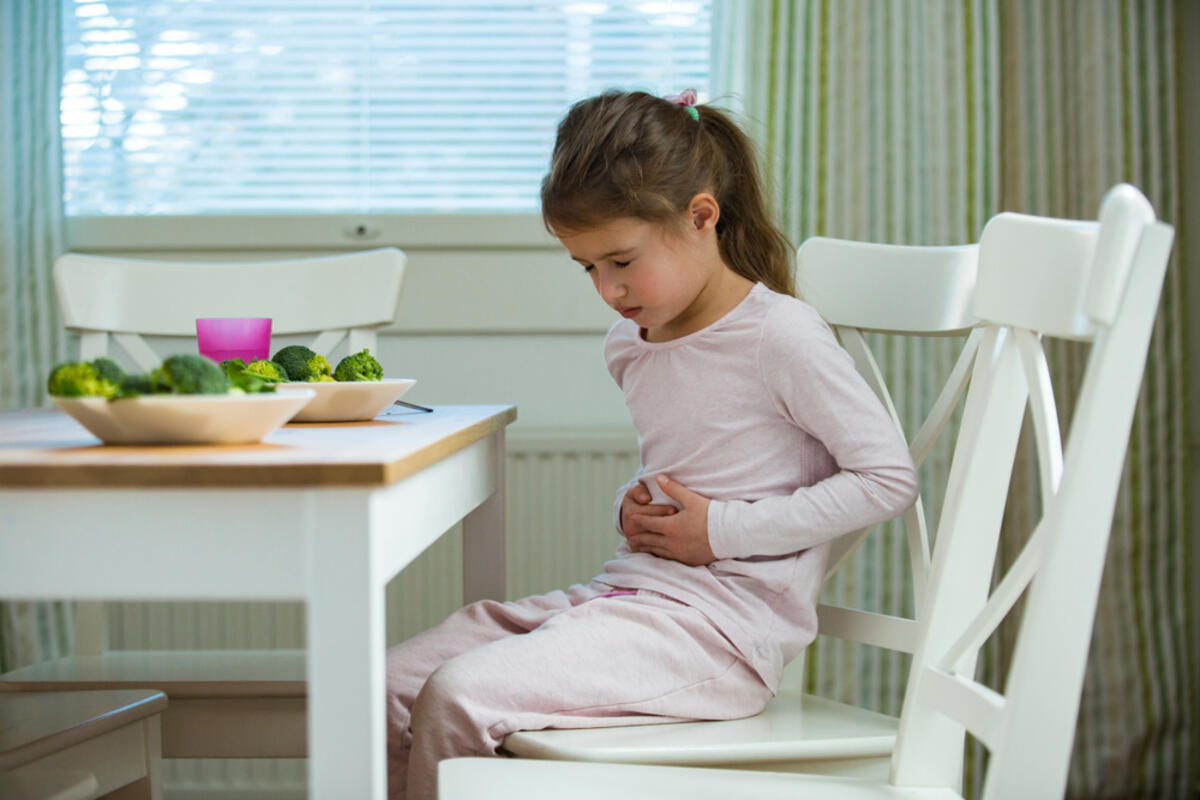Last Updated on November 24, 2025 by

Stomach problems in kids are a big worry. They can mean there’s something serious going on, such as gastrointestinal disease, that affects their health and happiness. As a trusted healthcare team, we know how important it is to find and fix these issues early.
Stomach pain in kids can come from many things. This includes infections, constipation, not being able to handle certain foods, and feeling stressed. Serious problems like gastroesophageal reflux disease (GERD), inflammatory bowel disease (IBD), and other stomach issues can really hurt if not treated right away.
Spotting these problems early and getting the right care is key. At our place, we’re all about top-notch healthcare. We also offer help and support for families from all over.

It’s important to understand the complex world of kids’ stomach problems. These issues affect the digestive system, causing a lot of pain and discomfort. They can really upset a child’s life.
These diseases can last a long time or come and go. Chronic conditions like Gastroesophageal Reflux Disease (GERD) can really affect a child’s life. On the other hand, acute conditions need quick medical help.
Studies show that many kids face stomach problems. For example, about 15% of kids suffer from chronic stomach pain. Also, GERD is found in up to 51% of kids with feeding disorders. These numbers show we need to know more and get them diagnosed right.
Knowing about these issues is key. Early signs mean we can get help fast. This can stop bigger problems later.
Children’s stomachs are not just smaller versions of adults’. They have special traits that make them more likely to get certain problems. For instance, their gut bacteria is growing and can affect how they digest food.
Also, kids are more likely to have functional disorders. This is because of their diet, stress, and how they’re growing. Knowing these differences helps us treat their stomach problems better.
Dealing with kids’ stomach issues can be tough. But learning about them helps us support kids and their families better.

It’s important to know about the different gastrointestinal diseases in kids. These diseases can be mild or severe and really affect their life. We’ll look at the common types, including both short-term and long-term conditions. We’ll also talk about what can increase a child’s risk and how these diseases can affect their growth.
Gastrointestinal diseases in kids can be either short-term or long-term. Acute conditions are short-term and usually get better with treatment. Examples include viral gastroenteritis and food poisoning. On the other hand, chronic conditions last a long time and need ongoing care, like inflammatory bowel disease (IBD) and gastroesophageal reflux disease (GERD).
Several things can increase a child’s risk for serious GI problems. These include genetics, environment, and lifestyle. For example, kids with a family history of IBD are more likely to get it. Also, what they eat and their exposure to toxins can matter.
Feeding problems are common in kids with severe stomach issues, seen in up to 69% with GERD. This shows why it’s key to catch and treat GI diseases early to avoid bigger problems.
Gastrointestinal diseases can really affect a child’s growth and development. Long-term conditions like IBD can cause the body to not absorb nutrients well, which can slow growth. Also, the ongoing inflammation can harm a child’s health and happiness.
It’s vital for doctors and parents to work together to manage a child’s GI health. This helps lessen the effects on their growth and development.
GERD is a common problem where stomach acid flows back into the esophagus. It affects kids’ health and can cause feeding issues and malnutrition if not treated.
GERD symptoms change with age. Babies often spit up after eating, which can make them fussy. Older kids might have heartburn, stomach pain, or trouble swallowing.
It’s key to know these symptoms by age to diagnose GERD right. For example, babies might arch their back or not want to eat. Toddlers and preschoolers might say their chest hurts or get pneumonia often.
Untreated GERD can cause serious issues, like feeding problems. Kids might start to dislike eating because it hurts. This can lead to malnutrition.
GERD can also cause more serious problems like esophagitis or Barrett’s esophagus. These issues highlight the need for early and effective treatment. The discomfort from eating can make feeding problems worse, affecting the child’s nutrition.
Treating GERD in kids involves several steps. First, making lifestyle changes is key. This includes changing what they eat and keeping their head of bed raised.
For severe cases, medicine might be needed. This can help reduce acid or improve digestion. In some cases, surgery might be an option if other treatments don’t work.
It’s vital to have a treatment plan that fits each child’s needs. This ensures GERD is managed well and the child stays healthy.
Diagnosing and treating IBD in kids is complex. It involves looking at both immediate symptoms and long-term health effects. IBD, which includes Crohn’s disease and ulcerative colitis, can really hurt a child’s life quality. We’ll look at symptoms, diagnosis, and treatment, keeping in mind growth and development.
Crohn’s disease can hit any part of the gut, from mouth to anus. Kids might have diarrhea, belly pain, weight loss, and tiredness. Doctors use tests like endoscopy and imaging to find out how bad it is.
Ulcerative colitis causes long-term inflammation and ulcers in the colon and rectum. Kids might see blood in their stool, feel belly pain, and need to go often. Managing it means controlling symptoms, avoiding problems, and keeping them well-nourished.
Treating IBD in kids is a team effort. It includes medicines, nutrition, and sometimes surgery. We aim to stop the disease, manage symptoms, and help them grow right. We weigh the good and bad of treatments to keep them healthy.
With a detailed and custom plan, we can make life better for kids with IBD. And help them stay healthy for the long run.
Children can face many serious digestive problems beyond common issues. These problems can greatly affect their life quality. They often need a team effort to manage well.
Functional gastrointestinal disorders cause ongoing symptoms without a clear cause. These symptoms can make daily life hard for kids.
Common symptoms include:
Doctors might suggest diet changes, stress relief, and medication to help.
Eosinophilic gastrointestinal disorders involve white blood cells in the GI tract. This can cause long-term inflammation and damage.
Eosinophilic esophagitis is a notable subtype. It makes swallowing hard and can cause food blockages. Treatment includes special diets and medicines to reduce inflammation.
Malabsorption disorders make it hard for the body to absorb nutrients. This can lead to growth problems and deficiencies in kids.
Causes and symptoms:
Managing these disorders means avoiding certain foods and ensuring kids get the nutrients they need.
Feeding disorders can be linked to GI problems. Discomfort or pain while eating can make kids avoid food.
Key considerations:
By tackling both GI issues and feeding disorders, we can help kids develop better eating habits and improve their health.
It’s key to spot gastrointestinal issues early in kids to manage them well. This helps avoid malnutrition and growth issues. Knowing when to get medical help for symptoms like belly pain, nausea, and bleeding is vital.
Thanks to new research, treating various gut diseases has gotten better. For example, new treatments for Inflammatory Bowel Disease (IBD) include MSCs and IL-23p19 antibodies. These offer hope for kids with these conditions. For more on the latest research, check out the National Institutes of Health website.
If you think your child has ongoing or serious gut problems, get them to a doctor fast. Early action can greatly improve a child’s life with gut diseases. It ensures they get the care they need for good digestive health and overall well-being.
Subscribe to our e-newsletter to stay informed about the latest innovations in the world of health and exclusive offers!